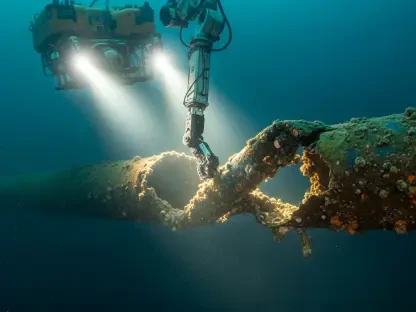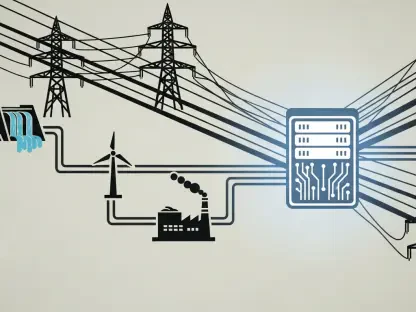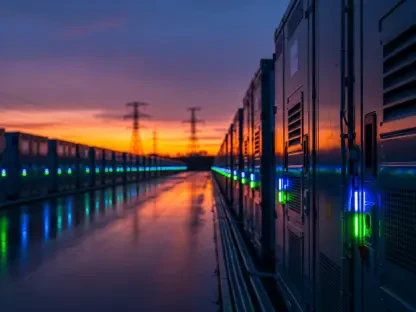In a startling turn of events at one of France’s largest nuclear facilities, an unexpected natural phenomenon has brought operations to a grinding halt, raising critical questions about the vulnerabilities of essential energy infrastructure. The Paluel nuclear power plant, a cornerstone of France’s energy grid, was forced to shut down nearly half of its capacity due to a massive swarm of jellyfish clogging the filters in its pumping station. This unusual disruption, reported as both massive and unpredictable by the national energy firm EDF, underscores how even seemingly minor natural events can have significant impacts on high-stakes industries. The incident not only highlights the operational challenges faced by nuclear facilities but also reignites the broader debate over the reliability and future of nuclear energy in meeting global demands. As France relies on nuclear power for nearly 70% of its electricity, such events draw attention to the delicate balance between harnessing this powerful resource and mitigating unforeseen risks posed by the environment.
Unforeseen Natural Disruptions in Nuclear Operations
The incident at Paluel serves as a stark reminder of how nature can interfere with even the most advanced technological systems. Located in northern France, the plant depends on a steady flow of water to cool its reactors, a process that was severely hampered when jellyfish inundated the intake filters. This led to a temporary reduction in output, affecting a substantial portion of the facility’s capacity and prompting immediate action from EDF technicians. While the issue occurred in a non-nuclear part of the plant, the cascading effect on overall production reveals a critical vulnerability in the infrastructure. Such disruptions, though rare, expose the challenges of maintaining a consistent energy supply in the face of unpredictable environmental factors. EDF’s response involved rigorous diagnostics and manual interventions to clear the filters, a process that, while successful, temporarily strained resources and highlighted the need for enhanced protective measures against similar future events.
Beyond the immediate operational setback, this event raises broader concerns about the resilience of nuclear power plants worldwide. Similar incidents have been reported at other facilities, including another French plant, suggesting that jellyfish swarms may pose a recurring threat during certain seasons or environmental conditions. The unpredictability of these natural occurrences complicates planning and preparedness, as standard protocols may not fully account for such anomalies. For a country like France, with 56 reactors contributing to a significant share of its energy mix, ensuring uninterrupted service is paramount. The Paluel shutdown, though resolved without long-term damage, prompts a reevaluation of how nuclear facilities can adapt to external challenges. This situation also amplifies the urgency of investing in research and technology to predict and mitigate the impact of natural phenomena on critical infrastructure, safeguarding energy security in an era of increasing environmental variability.
Nuclear Energy’s Role in a Changing Energy Landscape
Amid the operational hiccups exemplified by the Paluel incident, nuclear energy remains a pivotal player in the global push for cleaner power sources. Advocates argue that it offers a reliable alternative to fossil fuels, producing minimal air pollution and manageable levels of radioactive waste when handled correctly. Experts like Robert Hayes from North Carolina State University emphasize nuclear power’s potential to curb heat-trapping emissions, a pressing concern linked to severe health risks as noted by global health organizations. This perspective gains traction with initiatives like Microsoft’s plan to partially reopen the Three Mile Island facility in Pennsylvania, signaling corporate confidence in nuclear energy’s future. As data centers and artificial intelligence drive up energy demands, nuclear power is increasingly seen as a viable solution to meet these needs without exacerbating climate change, positioning it as a bridge to a more sustainable energy framework.
However, the path forward for nuclear energy is not without contention, as operational vulnerabilities like the jellyfish swarm cast a shadow on its reliability. Critics point to the high costs and long timelines associated with building and maintaining nuclear plants, alongside rare but catastrophic risks of meltdowns. In contrast, renewable sources such as solar and wind are often touted as more cost-effective and quicker to deploy, especially for grid-level storage. Physicist Amory Lovins from a Colorado-based clean-energy think tank argues that these alternatives can better address immediate energy needs without the inherent risks of nuclear technology. For individual consumers, home-based solar panels present an attractive option, offering energy independence and protection from utility disruptions caused by natural events. With federal tax incentives of up to 30% currently available, the shift toward renewables at a personal level becomes even more appealing, challenging nuclear energy’s dominance in the clean energy conversation.
Balancing Risks and Opportunities for Future Energy Solutions
Reflecting on the Paluel incident, it becomes evident that the energy sector must navigate a complex interplay of risks and opportunities. The jellyfish-induced shutdown, while a minor event in the grand scheme, illuminated the fragility of nuclear operations when confronted with unexpected natural challenges. EDF’s swift response ensured that full capacity was eventually restored, but the episode underscored the importance of robust contingency planning. It also served as a catalyst for discussions on fortifying infrastructure against environmental disruptions, a concern that extends beyond France to nuclear facilities globally. As the industry looks ahead, integrating advanced predictive technologies and reinforced protective systems could help mitigate such incidents, ensuring that nuclear power remains a steadfast contributor to energy security in an increasingly unpredictable world.
Looking to the future, the energy landscape demands a balanced approach that weighs the benefits of nuclear power against the practical advantages of renewables. The incident at Paluel, though resolved, acted as a cautionary tale, prompting stakeholders to prioritize resilience in critical systems. Moving forward, actionable steps include accelerating investments in innovative nuclear designs, such as small, portable reactors for diverse applications, while simultaneously scaling up renewable energy projects. Governments and corporations can also incentivize consumer-level adoption of solar and wind solutions through sustained policy support. By fostering a diverse energy mix, the global community can address climate goals and rising demands without over-relying on any single source. The lessons learned from this unusual disruption pave the way for a more adaptive and forward-thinking strategy, ensuring that both nuclear and renewable energies play complementary roles in shaping a sustainable tomorrow.









